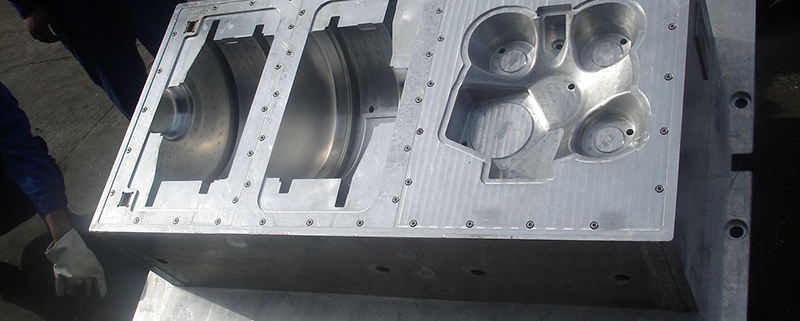In mold making, we usually hear casting and forging. What is the difference between the two manufacturing processes?
One casting
Casting is a process in which a metal is smelted into a liquid that meets certain requirements, poured into a mold, and cooled, solidified, and cleaned to obtain a casting (part or blank) having a predetermined shape, size, and performance. The basic process of industry.
The blank produced by casting has low cost, and it can show its economicality for parts with complicated shapes, especially those with complex inner cavity; at the same time, it has wide adaptability and good comprehensive mechanical properties. However, materials required for casting production (such as metal, wood, fuel, modeling materials, etc.) and equipment (such as metallurgical furnaces, sand mixers, molding machines, core making machines, falling sand machines, shot blasting machines, cast iron plates, etc.) It is polluted by dust, harmful gases and noise.
1. There are many kinds of castings, which are habitually divided according to the modeling method:
1 Ordinary sand casting, including wet sand type, dry sand type and chemical hardening sand type.
2Special casting, according to the modeling material, can be divided into special castings with natural mineral sandstone as the main modeling material (such as investment casting, clay casting, casting workshop shell casting, negative pressure casting, solid casting, ceramic casting). Etc.) and special castings with metal as the main casting material (such as metal casting, pressure casting, continuous casting, low pressure casting, centrifugal casting, etc.).
2. The casting process usually includes:
1 mold (to make liquid metal into a container for solid casting) preparation, mold can be divided into sand type, metal type, ceramic type, mud type, graphite type according to the materials used; can be divided into disposable type and semi-permanent type according to the number of times of use And permanent. The pros and cons of casting preparation are the main factors affecting the quality of castings;
2 melting and casting of cast metal, cast metal (casting alloy) mainly cast iron, cast steel and cast non-ferrous alloy;
3 casting processing and inspection, casting processing includes removal of core and casting surface foreign matter, refining riser, burr and burr and other projections, as well as heat treatment, shaping, anti-rust treatment and roughing.
2. Forging
Forging is a processing method that uses a forging machine to apply pressure to a metal blank to plastically deform it to obtain a forging with certain mechanical properties, a certain shape and size, and is one of the two major components of forging.
Through forging, it can eliminate the as-cast looseness and weld hole of the metal, and the mechanical properties of the forging are generally superior to those of the same material. For important parts with high load and severe working conditions in machinery, forgings are often used except for rolled sheets, profiles or welded parts that are simple in shape.
1. Forging according to the forming method
1 open forging (free forging)
The impact force or pressure is used to deform the metal between the upper and lower stellite irons (anvil) to obtain the required forgings, mainly hand forging and mechanical forging.
2 closed mode forging
The metal blank is subjected to compression deformation in a forging die having a certain shape to obtain a forged piece, which can be classified into die forging, cold heading, rotary forging, extrusion, and the like.
2. According to the deformation temperature
Forging can be further divided into hot forging (processing temperature is higher than the recrystallization temperature of the blank metal), warm forging (below the recrystallization temperature) and cold forging (normal temperature).
The forging materials are mainly carbon steel and alloy steel of various compositions, followed by aluminum, magnesium, titanium, copper and the like and alloys thereof. The raw state of the material is bar, ingot, metal powder and liquid metal. The ratio of the cross-sectional area of the metal before deformation to the area of the die after deformation is called the forging ratio. Proper selection of forging ratios has a lot to do with improving product quality and reducing costs.



